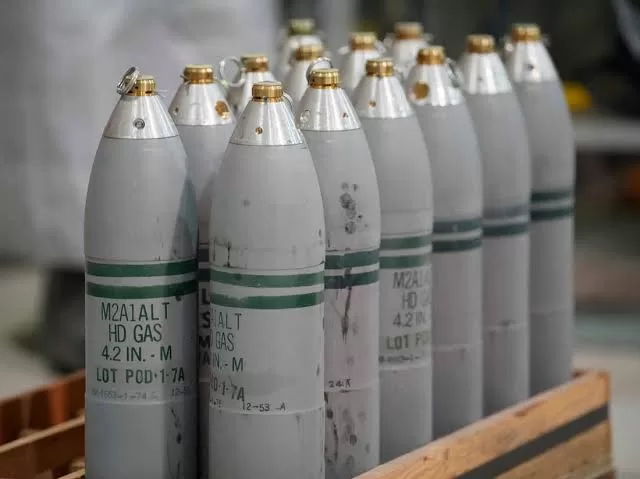Chemical weapons are toxic substances that are used to kill, injure, or incapacitate. They are typically delivered as a gas or liquid, and can be dispersed through the air, on the ground, or in water.
There are many different types of chemical weapons, but some of the most common include:
- Nerve agents, such as sarin, tabun, and VX, are extremely toxic and can kill within minutes of exposure. They work by disrupting the nervous system, causing symptoms such as paralysis, convulsions, and respiratory failure.
- Blister agents, such as mustard gas and lewisite, cause severe burns to the skin, eyes, and respiratory tract. They can also cause internal bleeding and death.
- Choking agents, such as chlorine and phosgene, irritate the lungs and cause difficulty breathing. In high concentrations, they can lead to death by asphyxiation.
- Incapacitating agents, such as tear gas and pepper spray, cause temporary symptoms such as coughing, vomiting, and blurred vision. They are typically used to disperse crowds or control riots.

The use of chemical weapons is prohibited by international law. However, they have been used in warfare on numerous occasions, most notably during World War I and the Syrian Civil War.
The disadvantages of chemical weapons include:
- Their high lethality. Chemical weapons can kill or injure large numbers of people quickly and easily.
- Their indiscriminate nature. Chemical weapons cannot be targeted precisely, and can therefore harm both combatants and civilians.
- Their long-term effects. Chemical weapons can cause lasting health problems, even in survivors.
- Their psychological effects. The use of chemical weapons can spread fear and panic among civilian populations.
For all of these reasons, chemical weapons are considered to be some of the most dangerous weapons of war.

There are currently 193 countries that are party to the Chemical Weapons Convention (CWC), which prohibits the development, production, stockpiling, and use of chemical weapons. However, there are a number of countries that are believed to have chemical weapons stockpiles, including:
- Russia is believed to have the world’s largest chemical weapons stockpile, estimated to be around 40,000 metric tons.
- United States is believed to have the second-largest chemical weapons stockpile, estimated to be around 30,000 metric tons.
- Syria is believed to have a stockpile of around 1,000 metric tons of chemical weapons.
- Iraq is believed to have a stockpile of around 500 metric tons of chemical weapons.
- China is believed to have a stockpile of around 200 metric tons of chemical weapons.
These are just a few of the countries that are believed to have chemical weapons stockpiles. The exact quantities of chemical weapons held by each country is not publicly known, as this information is classified.
It is important to note that the CWC does not prohibit the possession of small quantities of chemical weapons for research or medical purposes. However, any country that possesses chemical weapons must declare their stockpile to the OPCW (Organization for the Prohibition of Chemical Weapons), and must destroy their stockpiles in accordance with the terms of the CWC.
The use of chemical weapons is a serious violation of international law, and any country that uses chemical weapons can face severe consequences, including sanctions and military action.

